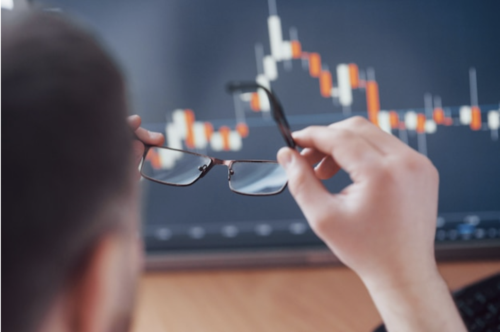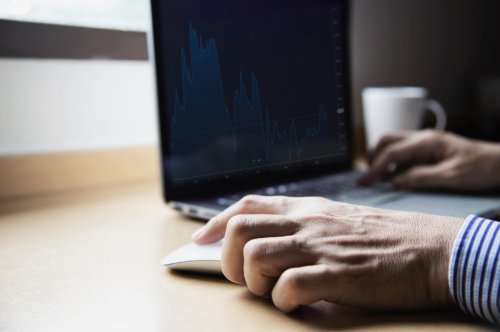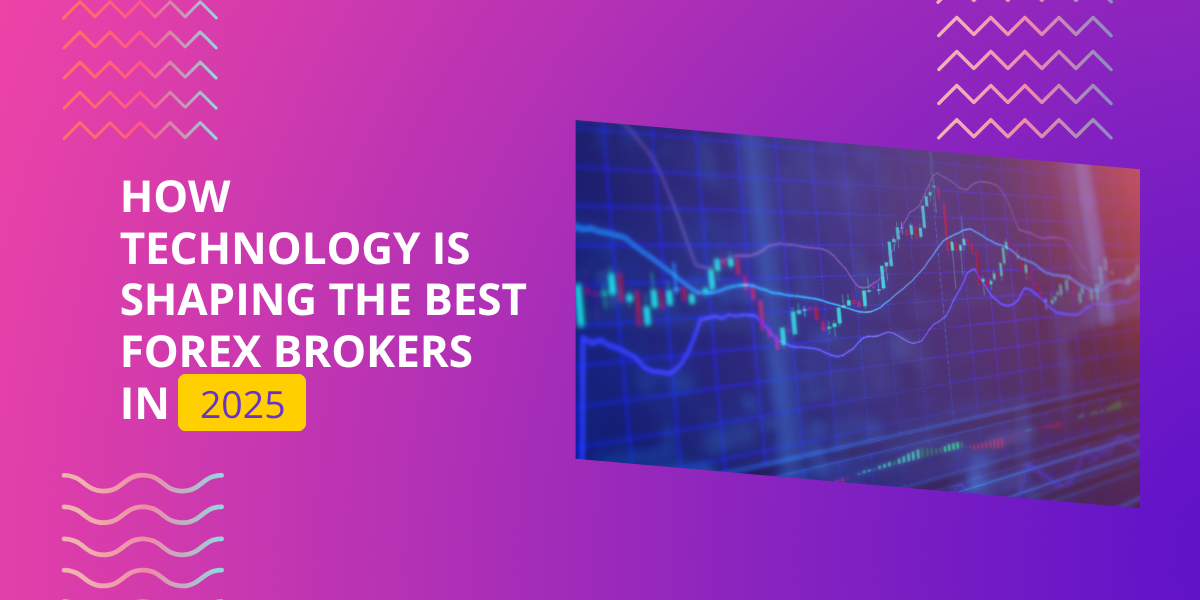The foreign-exchange market has always been a playground for early adopters. But in 2025, the speed at which innovation is rewriting the brokerage playbook is staggering, even for tech-savvy traders.
Five years ago, a “cutting-edge” broker meant tight spreads, MT4/MT5, and perhaps an in-house social-trading tab. Today, those basics are table stakes.
The best forex brokers topping review lists in 2025 weave together artificial intelligence, blockchain rails, immersive user interfaces, and real-time RegTech into a fluid trading experience that feels closer to a personalized fintech cockpit than the click-and-pray terminals of old.
 Below, we’ll unpack the technologies driving that shift, focusing on the areas where they deliver tangible edge rather than buzzword bingo.
Below, we’ll unpack the technologies driving that shift, focusing on the areas where they deliver tangible edge rather than buzzword bingo.
Algorithmic Trading for All: AI Moves From the Quants to the Crowd
Eight or ten years ago, algorithmic trading platforms required Python fluency, a VPS subscription, and a tolerance for painful debugging at 3 a.m. Now, thanks to low-code AI engines baked straight into broker dashboards, the barrier to entry has collapsed.
Visual Strategy Builders Powered by Machine Learning
The best Forex brokers in 2025 include drag-and-drop “strategy canvases” that auto-suggest indicators, filters, and exit rules using machine-learning models trained on decades of tick data.
Traders sketch an idea, click Back-test, and the system not only crunches historical results within seconds but also offers explanations of overfitting risk, slippage, and likely real-world variance.
Personalized Signal Feeds
Instead of generic daily newsletters, brokers stream AI-curated trade setups tuned to each account’s risk tolerance, favored currency pairs, and time zone.
The backend model studies the trader’s history, filters macro news in real time, and flags only those scenarios that mesh with the user’s behavioral patterns. It’s not a crystal ball; drawdowns still happen, but it drastically reduces the noise that clogs decision-making.
From Niche to Necessity
According to the 2025 Deloitte study, 67% of retail investors report using at least one AI-powered tool. Brokers that lack these tools are hemorrhaging high-value users to competitors who offer a plug-and-play quant environment.
Neural-Network Risk Engines: Dynamic Margin, Fewer Margin Calls
Volatility spikes can wash out accounts in minutes. The best forex brokers now deploy real-time neural-network risk engines that monitor portfolio exposure tick by tick and adjust margin requirements before danger escalates.
- Adaptive margin tiers. Instead of fixed leverage ratios, the system projects VaR (value at risk) across currency baskets and quietly throttles leverage on pairs that show abnormal kurtosis or correlation breakdowns.
- Predictive margin-call alerts. Traders receive a push notification, often hours before a margin call would occur, detailing the probability curve of a stop-out event.
- Regulator comfort. Regulators like ESMA and MAS publicly applaud these AI risk engines because they contain systemic spikes without heavy-handed leverage caps. Brokers that adopt them gain faster license approvals in new jurisdictions.
Blockchain Settlement and Tokenized Liquidity: Goodbye, T+2
Latency and hidden fees used to be the tax every forex trader paid. Blockchain rails are eliminating both.
On-Chain Trade Records
When you hit Buy GBP/USD, the trade is hashed to a permissioned blockchain shared by prime brokers, liquidity providers, and auditors. Execution timestamps become tamper-proof, killing “last-look” disputes and shaving milliseconds off pricing.
Stablecoin Funding and Withdrawals
Some brokers in 2025 accept regulated stablecoins like EUR-GBC (euro-backed) or USD-NYC (state-chartered). Deposits settle in under a minute with network fees under $0.10.
For traders in regions plagued by slow banking rails, this removes the old “weekend gap” when bank wires stalled strategy deployment.
Tokenized Liquidity Pools
The most radical change is tokenized interbank liquidity. Think of it as a giant pool where liquidity providers stake tokenized capital and earn micro-fees dynamically based on the spread tightness they deliver.
 Traders can see EUR/USD spreads as low as 0.1–0.2 pips during peak hours with raw‑spread or zero‑account structures. And while tokenization pilots and early trials suggest potential execution‑cost reductions against traditional prime‑broker models.
Traders can see EUR/USD spreads as low as 0.1–0.2 pips during peak hours with raw‑spread or zero‑account structures. And while tokenization pilots and early trials suggest potential execution‑cost reductions against traditional prime‑broker models.
Greener Servers, Cleaner Conscience: Sustainable Brokerage Tech
Sustainability isn’t just a CSR checkbox. In 2025, the leaders run on modular liquid-cooling clusters co-located with renewable-energy farms.
- Latency vs. location. New fiber routes from Nordic hydro farms to London LD4 cut round-trip time by only 1.12 milliseconds, imperceptible to humans but enough to satisfy algorithmic traders who care about both speed and carbon offset certificates.
- Carbon dashboards for traders. Several brokers publish per-trade CO₂ estimates right next to commission charges. It sounds trivial, but ESG-minded funds increasingly favor platforms that prove end-to-end sustainability.
Brokers ignoring green tech risk higher energy bills and the possibility of future carbon taxes that could eat into razor-thin spreads.
Real-Time RegTech: Compliance Without the Friction
Know-Your-Customer checks used to be a multi-day email slog. In 2025, onboarding time with top forex brokers averages under six minutes, thanks to AI-driven compliance stacks.
- Biometric KYC. Users scan a passport and blink into the phone’s camera; a liveness-detection model cross-references government databases instantly.
- AML graph analytics. Transactions route through graph databases that flag unusual fund flows in seconds, reducing false positives that once froze legitimate accounts.
- Geo-fenced leverage rules. Depending on jurisdiction, say, a 30:1 cap in the EU vs. 50:1 elsewhere, the broker applies correct leverage automatically. Traders traveling across borders get real-time prompts if their limits change.
- The payoff. Fewer compliance bottlenecks, lower fines, and, importantly, a smoother UX that converts trial accounts into funded ones at a higher rate.
Social Trading 3.0: Copy If You Dare With Dynamic Risk Controls
Even in 2025, it’s still in the early stages, but still very important.
- On-chain performance records. Strategy providers can’t cherry-pick or delete losing months; a cryptographic audit trail guarantees integrity.
- Dynamic risk mirroring. When followers copy a master account, the broker auto-scales positions based on each follower’s max drawdown setting, not on a crude lot-size ratio. If the master increases leverage, the follower receives a real-time warning and must opt in to a higher risk.
- Reputation tokens. The most consistent signal providers earn reputation tokens that affect their standing in search results and revenue share. If they over-leverage or ghost a losing streak, their token score drops, no more ride-the-hype guru blowups.
For traders, Social Trading 3.0 offers a middle path between hands-off robo-investing and lone-wolf discretionary work, with better guardrails than the early 2020s copycat boom.
Conclusion
By 2025, the gulf between a “good” and a “great” forex broker is defined less by headline spreads and more by the invisible tech stack under the hood.
AI democratizes algo trading, neural-network risk engines slash blow-up risk, blockchain rewires settlement and transparency, mixed reality reshapes the workstation, green servers future-proof operations, RegTech keeps regulators at bay without slowing traders, and Social Trading 3.0 injects accountability into copying.
For tech-savvy traders, the checklist is clear: demand platforms that integrate these innovations rather than bolt them on as marketing props.
Because in a market where milliseconds matter and risk never sleeps, the broker’s tech infrastructure is now as critical as any trade idea you’ll ever hatch.


 Tags:
Tags:









